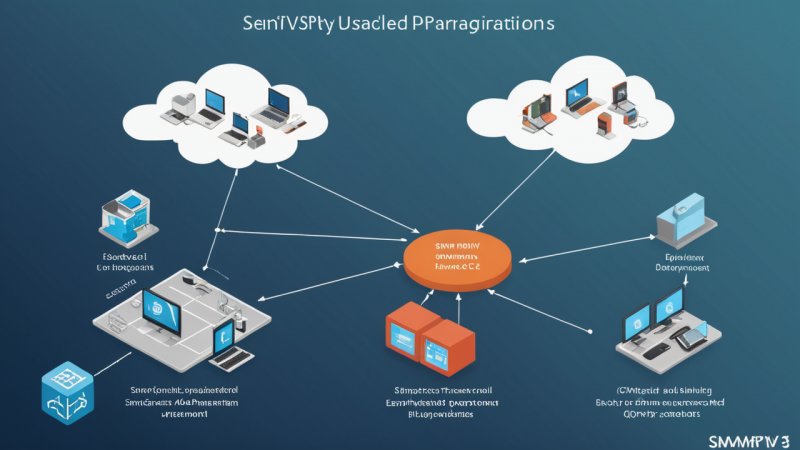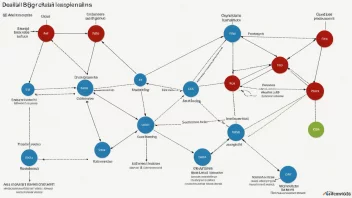The Simple Network Management Protocol (SNMP) has been a cornerstone of network management for decades, allowing network administrators to monitor and manage devices on their networks efficiently. With the evolution of network security threats and the increasing complexity of network environments, SNMPv3 emerged as a more secure and robust version compared to its predecessor, SNMPv2c. This article aims to provide a comprehensive comparison between SNMPv3 and SNMPv2c, highlighting their features, advantages, disadvantages, and overall effectiveness in network management.
Overview of SNMP Versions
SNMP is an application-layer protocol used for managing devices on IP networks. It enables network administrators to monitor network performance, find and solve network problems, and plan for network growth. SNMP has undergone several updates, with SNMPv2c and SNMPv3 being the most widely used versions.
SNMPv2c
SNMPv2c, which stands for Simple Network Management Protocol version 2 community-based, was introduced as an update to SNMPv1. It brought several enhancements, including improved performance, additional protocol operations, and more extensive data types. However, it still relied on community strings for security, making it vulnerable to unauthorized access.
SNMPv3
SNMPv3 was developed to address the security shortcomings of its predecessors. It introduced robust security features, such as user authentication, encryption, and access control, significantly enhancing the security of network management operations. These features make SNMPv3 more suitable for modern network environments where security is paramount.
Security Features
SNMPv2c Security
SNMPv2c employs a community string that acts as a password, allowing access to the managed devices. However, this method of security has significant limitations:
- Weak Security: Community strings are transmitted in plain text, making them susceptible to interception and unauthorized access.
- Lack of Authentication: There are no mechanisms to verify the identity of the users accessing the network devices.
- No Encryption: Data transmitted over the network is not encrypted, exposing sensitive information to potential eavesdropping.
SNMPv3 Security
SNMPv3 offers several advanced security features:
- User Authentication: It utilizes protocols such as MD5 and SHA to authenticate users, ensuring that only authorized personnel can access the network devices.
- Data Encryption: SNMPv3 supports encryption methods like DES, AES, and others, protecting the confidentiality of the data in transit.
- Access Control: It allows administrators to define user roles and permissions, providing granular control over who can access what data.
Usability and Complexity
SNMPv2c Usability
One of the main advantages of SNMPv2c is its simplicity:
- Easy to Implement: The protocol is straightforward, making it easy for network administrators to deploy and manage.
- Minimal Configuration: SNMPv2c requires less configuration compared to SNMPv3, which can be beneficial for smaller networks with limited resources.
SNMPv3 Usability
While SNMPv3 offers superior security, it comes with additional complexity:
- Configuration Complexity: The enhanced security features require more detailed configuration, which can be daunting for less experienced administrators.
- Learning Curve: Understanding the security model and implementing it correctly may require additional training for network staff.
Performance Considerations
SNMPv2c Performance
In terms of performance, SNMPv2c is often perceived as faster:
- Lower Overhead: Because it lacks complex security features, SNMPv2c can be less resource-intensive, resulting in quicker response times.
- Optimal for Simple Networks: For straightforward monitoring tasks and smaller networks, the performance of SNMPv2c is typically adequate.
SNMPv3 Performance
Despite its additional security features, SNMPv3 can introduce some performance overhead:
- Increased Resource Usage: The encryption and authentication processes require more CPU and memory resources, which can affect performance.
- Network Latency: The added steps of authentication and encryption can introduce latency, especially in high-traffic networks.
Use Cases and Suitability
When to Use SNMPv2c
SNMPv2c might be suitable for the following scenarios:
- Small Networks: Organizations with small-scale networks and limited security requirements may opt for the simplicity of SNMPv2c.
- Legacy Systems: Devices that do not support SNMPv3 may necessitate the use of SNMPv2c for monitoring.
When to Use SNMPv3
Conversely, SNMPv3 is recommended in situations that demand enhanced security:
- Enterprise Environments: Larger organizations with more complex network architectures should use SNMPv3 to protect sensitive data.
- Compliance Requirements: Industries subject to regulatory compliance may require the security features offered by SNMPv3.
Conclusion
In summary, both SNMPv2c and SNMPv3 play crucial roles in network management, but they cater to different needs and environments. SNMPv2c offers simplicity and ease of use, making it suitable for smaller networks or legacy systems. In contrast, SNMPv3 provides a comprehensive security framework essential for modern enterprise networks where data integrity and confidentiality are critical. For organizations that prioritize security and compliance, SNMPv3 is the clear choice, while SNMPv2c may still have its place in less demanding scenarios.






